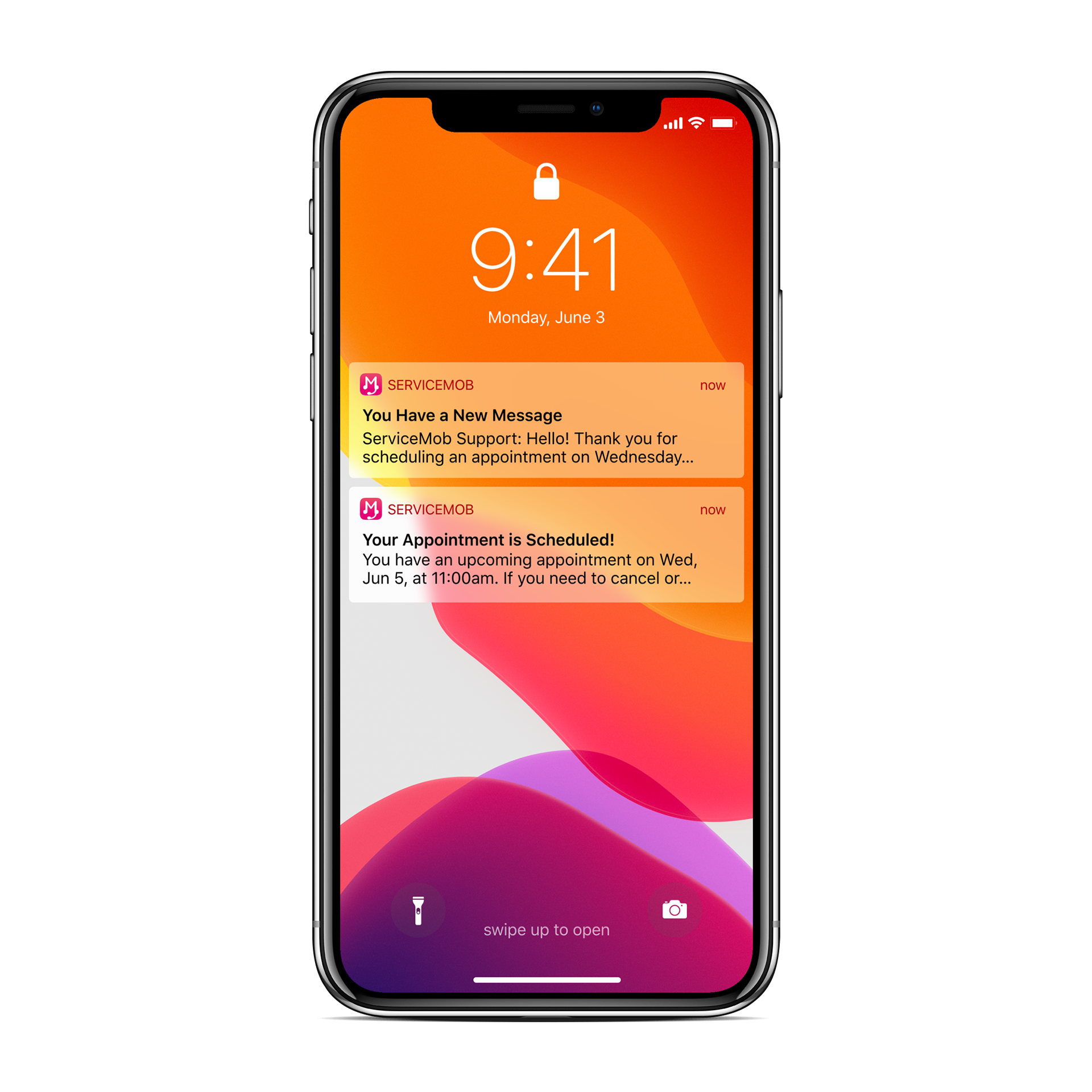


My Role: Product Designer Project Length: 8 Months
Tools Used: Adobe XD, Miro Collaborators: 1 Product Manager, 3 Developers, CEO, SVP
Methods Used: Card Sorting, User Interviews, Observational Studies, Usability Testing
Overview:
This project was completed during my time at ServiceMob. Due to certain constraints, I am unable to provide detailed product descriptions, mockups, or client information.
The concept was to create a mobile app that would re-envision customer service and give users better control and visibility when contacting customer service across various companies.
The product was built and pitched, but ultimately was not released due to technical/business constraints and a pivot in direction.
Product mockup and promotional material for the mobile app on the ServiceMob company website
Context: Understanding the Problem Space & Areas for Opportunity
Think of the last time you had to call customer service. How would you rate your experience? How did it make you feel? After your most recent experience, would you ever contact that company again?
For the longest time, customer service has been seen as a necessary evil, something that no one finds enjoyable, but would need to do in order to get a problem solved.
Typically, when reaching out to a company's customer service, you would call a number, navigate an IVR (interactive voice response) menu via a series of button presses and extended wait times in order to reach an Agent.
This process of contacting customer service has gone on for years and hasn't changed much since its original inception. Because of this, we saw an opportunity and wanted to explore the idea of envisioning how modern customer support should look and feel like.
The Goal:
Create an app based on customer service that fixed the many inefficiencies and frustrations people had when contacting customer service.
By giving customers more control, options, and visibility, our assumption was that companies could benefit via higher CSAT/NPS scores and lowered wait times/less work demand during peak hours for contact centers.
Screenshot of user flow from early prototype (Source: Miro)
Defining the Problem and Users:
Our initial assumption was that our target audience would be very wide since it would include literally anyone who's ever called customer service! However, after rethinking our product strategy with our Product Manager, SVP, and CEO, we realized the best path to productization and monetization was to create a product with the assumption that it would be incorporated with a company/enterprise in mind.
With that in mind, we shifted our definitions to a combination of solving user needs (Users who contact customer support) and solving business/enterprise needs (Solving key customer support issues from the enterprise perspective).
Our Solution:
Our solution was to create a mobile app from the perspective of the consumer that visualized the entire user journey for people contacting customer support. By creating a universal hub for users, our goal was that it would:
a) provide better transparency for consumers,
b) help regulate traffic during peak hours via demand shifting for customer service agents, and
c) increase customer satisfaction (CSAT/NPS) via lowered wait times and providing more convenient alternatives/quality of life (QoL) features as opposed to waiting in queue, such as scheduling an appointment/callback, seeing a history log of your interactions with customer service, and more.
The Process:
In order to define and standardize a mental model of what we were building, I conducted a card sorting exercise with the team. This exercise helped us rank each feature in order of importance and prioritize a schedule based on each feature's estimated timeline of design-to-development production.
After completion of team ideation, I conducted 12 user interviews to better understand the needs and frustrations people who had experience contacting customer service faced, and figure out areas of opportunity for our product to hone in on.
Throughout the project's duration, I attended weekly product strategy meetings that at times included product managers, developers, our CEO, clients, senior executive stakeholders, and sales executives. Using common UX exercises such as site maps, user flow charts, and wireframes, I was able to quickly condense complex feature discussions into actionable items and align business goals, user/usability goals, and time constraints into tasks with achievable deadlines.
Picture taken of card sorting exercise done with team
Results and Feedback:
Client Feedback:
From discussions with clients, we discovered that creating a third-party mobile app would be hard to implement and sign from an enterprise perspective. Since each company has their own unique IVR, it would be difficult to translate and apply our product for each potential client. In addition, feedback given was that not a lot of companies would be interested in such a concept, as each company would usually opt to create their own in-house mobile app to differentiate and separate themselves from competitors.
User Feedback:
However, from user testing and usability testing, we discovered that our product demonstrated clear value! Users expressed that they highly valued our concept app, and that if this was an existing product, they would download and see themselves frequently using our product. In addition, most users saw our product as simple, effective, and easy to use.
However, one potential drawback we discovered was about how our products' accessibility and how it might not translate well for older adults. Since older adults are historically depicted as less tech savvy and potentially represent a higher proportion of users who contact customer support, we would have to take into account more consideration for potential issues and specific use case scenarios (audio/visual cognition and impairment, tech proficiency/literacy, etc.).
Result:
Due to combination of client/user feedback and potential roadblocks to adoption, we shifted from user-first/consumer-first perspective to the enterprise/SaaS perspective. This directly led to the development of our next project in optimizing customer service: creating a simpler, optimized analytics platform that provided better data insights and was easier to use than what is currently on the market!
